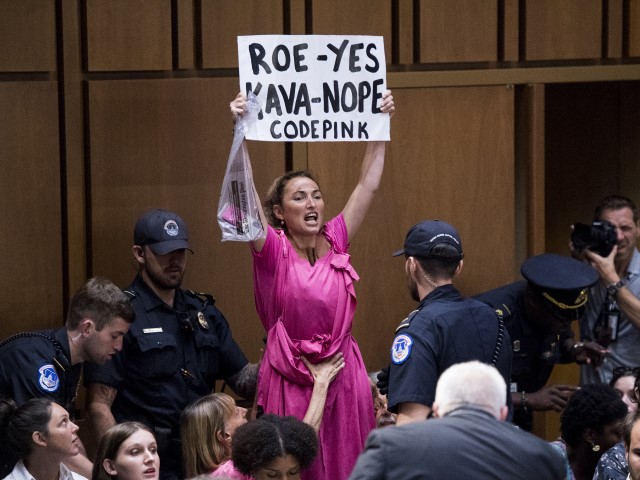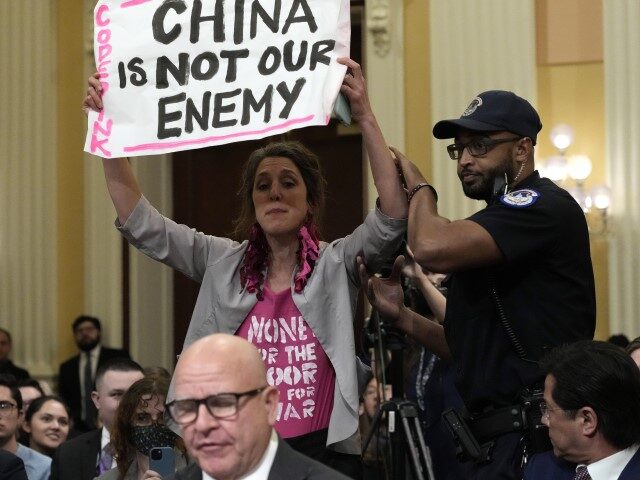The far-left New York Times (NYT) on Saturday published an exposé on Neville Roy Singham, an American millionaire socialist activist who, the newspaper claimed, “works closely with the Chinese government media machine” and finances Chinese Communist Party propaganda operations around the world.
“From a think tank in Massachusetts to an event space in Manhattan, from a political party in South Africa to news organizations in India and Brazil, The Times tracked hundreds of millions of dollars to groups linked to Mr. Singham that mix progressive advocacy with Chinese government talking points,” the NYT reported.
One example spotlighted in the report is a group called “No Cold War,” which is ostensibly a “loose collective” of American and British activists who believe the Western world is picking a fight with China to distract the public from “issues like climate change and racial injustice.”
No Cold War is allegedly a fuzzy outgrowth of Singham’s “web of charities and shell companies,” and its activities receive wildly disproportionate attention from Chinese state media organizations – which, unlike the general Chinese population, are allowed to use Western social media platforms like Twitter to push Beijing’s propaganda.
When push comes to shove, as it literally did during a November 2021 brawl in the streets of London’s Chinatown, groups like No Cold War are conspicuously willing to prioritize the Chinese government’s interests over their own agendas. In the case of the 2021 brawl, violence erupted after Hong Kong democracy activists confronted No Cold War’s street legions.

A scuffle broke out between Pro-Beijing attendees (“No Cold War”) and Hong Kong democracy protesters during a rally in London on November 27, 2021. (May James/SOPA Images/LightRocket via Getty Images)
The NYT also paid some attention to Code Pink, the “anti-war” group that suddenly decided concentration camps and forced labor for the Uyghur Muslims were peachy keen after Chinese money began seeping into its funding stream. Singham’s wife Jodie Evans is a co-founder of Code Pink.
The UK Daily Mail on Saturday remembered Code Pink activists disrupting U.S. congressional hearings on the rising threat of China, chanting and waving signs with slogans such as “China Is Not Our Enemy” and “Stop Asian Hate.”

Founder of CODEPINK, Jodie Evans (L) and founder of ThoughtWorks, Neville Roy Singham (Dave Kotinsky/Getty Images for V-Day)
Some of Singham’s other groups work quite openly with Chinese state media and even share office space with Chinese propaganda operations.
The NYT somewhat petulantly described the Singham network as a good example of what a “disinformation” network “looks like on the left” – as though the left was not positively brimming with them:
Mr. Singham’s groups have produced YouTube videos that, together, racked up millions of views. They also seek to influence real-world politics by meeting with congressional aides, training politicians in Africa, running candidates in South African elections and organizing protests like the one in London that erupted into violence.
The result is a seemingly organic bloom of far-left groups that echo Chinese government talking points, echo one another, and are echoed in turn by the Chinese state media.
Because the network is built on the back of American nonprofit groups, tax experts said, Mr. Singham may have been eligible for tax deductions for his donations.
Later in the article, the NYT admitted the major reason it decided to start wading through the incredibly complex paperwork jungle surrounding Singham’s influence network is that “self-described anti-fascists” were complaining about the Chinese government muscling in on their movement.
The Indian government in 2021 raided an operation called NewsClick that was financed by Singham because Indian officials accused the site of money laundering and pushing Chinese propaganda. Indian media responded to the NYT’s report with a hearty “Welcome to the party, pal.”
The Times of India (TOI) gently chided the NYT for not spending more time on the Singham network’s support for Russian imperialism as well as Chinese fascism.
TOI noted, seeming in part to echo the NYT:
Singham’s collectives have produced YouTube videos that, collectively, have garnered millions of views. Their endeavors also extend to exerting influence in real-world politics through interactions with congressional aides, training political figures in Africa, fielding candidates in South African elections, and orchestrating demonstrations.

A CodePink protester shouts during Senate Judiciary Committee confirmation hearing of Brett Kavanaugh to be Associate Justice of the Supreme Court on Tuesday, Sept. 4, 2018. (Bill Clark/CQ Roll Call)
Anurag Thakur, India’s youth minister and a member of the governing BJP party, said on Sunday it was long past time for Western media to report on Singham’s network as “dangerous tools” of the Chinese Communist Party. He also castigated the Indian opposition, especially the India Congress Party (INC, or simply “Congress”) for turning a blind eye to the network’s Chinese connections because they liked the way operations such as NewsClick attacked the BJP government.
“Way back in the year 2021, when India’s law enforcement agencies initiated an inquiry against NewsClick based on strong evidence of money laundering, the Congress and the entire Left-Liberal ecosystem came to defend it,” Thakur recalled.
The NYT mentioned that networks like Singham’s fit neatly into Chinese dictator Xi Jinping’s strategy for winning a “smokeless war,” a concept that broadly includes defeating the West through information warfare and economic leverage rather than military force.
The Chinese regime’s ability to survive unleashing the Wuhan coronavirus pandemic upon the world, with seemingly minimal political or economic retribution – and numerous Western political media and operations actually defending the Chinese against deeper investigations of the Wuhan coronavirus’s origins – is often cited as evidence that China is winning the smokeless war.
In fact, Beijing used the pandemic as an opportunity to dramatically increase its influence over foreign media operations and activist groups. Chinese propaganda flowed through worldwide media organizations, attacking the “lab leak” theory and touting China’s supposedly exemplary response to the coronavirus outbreak – a narrative that collapsed and was utterly forgotten after the Chinese people rose up against Xi’s insane citywide lockdowns in late 2022.
One example of China shrewdly using the pandemic to its advantage was that foreign media had a hard time operating news bureaus inside China during the lockdowns, so they became even more dependent on the Chinese Communist Party to furnish packaged news for redistribution. Newsrooms that were losing revenue and trimming staff during the pandemic were only too happy to accept the gifts of “free” news content offered by Beijing.
The International Federation of Journalists (IFJ) said in a May 2021 study:
More than half of all countries said that coverage of China in their national media was more positive since the start of the pandemic. The percentage of nations reporting China to have a visible presence in their media ecosystems was up from 64 percent to 76 percent in a year.
Singham responded to the NYT report with a statement categorically denying he is “a member of, work for, take orders from, or following instructions of any political party or government or their representatives.”
“I am solely guided by my beliefs, which are long-held personal views,” he insisted.

COMMENTS
Please let us know if you're having issues with commenting.